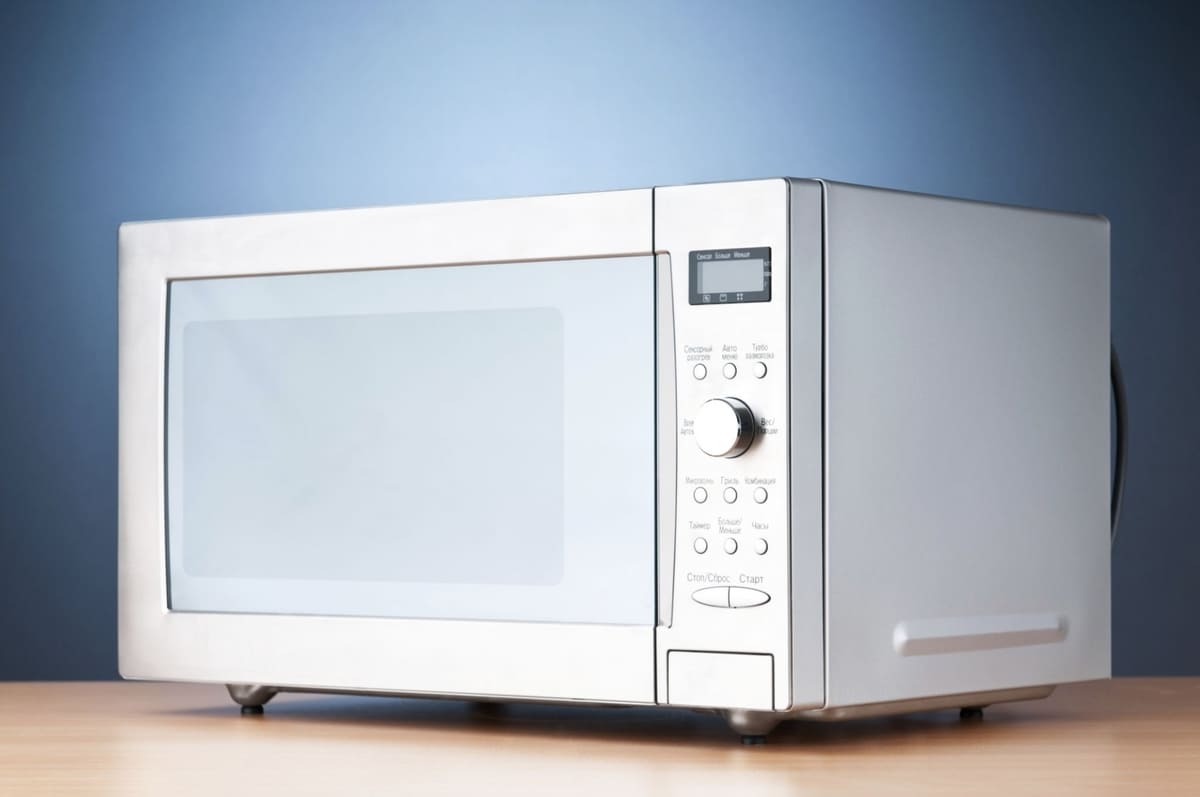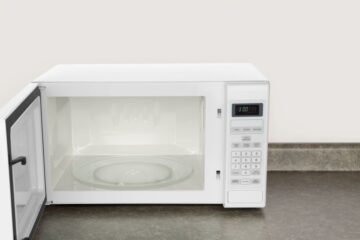Microwaves have become an essential appliance in modern kitchens. They are versatile, convenient, and save time when it comes to cooking, reheating, and defrosting food. But with so many options available in the market, choosing the right size microwave can be overwhelming. In this article, we will guide you through the different sizes of microwaves, their pros and cons, and factors to consider when selecting the ideal microwave for your kitchen.
Understanding Microwave Size
How microwave size is measured?
Microwave size is typically measured in cubic feet (cu ft). This measurement represents the interior capacity of the microwave and determines the size of the plates or dishes that can fit inside.
Different sizes of microwaves available in the market
Microwaves come in different sizes ranging from small, medium to large. Small microwaves have a capacity of less than 1.0 cu ft, medium microwaves have a capacity between 1.0 and 2.0 cu ft, while large microwaves have a capacity of over 2.0 cu ft.
How microwave size affects its performance?
The size of the microwave affects its performance, especially when it comes to cooking times. Smaller microwaves with lower wattage are ideal for simple tasks like reheating and defrosting food. On the other hand, larger microwaves with higher wattage are better suited for cooking larger meals or dishes.
Factors to Consider When Choosing Microwave Size
Kitchen size and layout
The size of your kitchen plays a significant role in determining the size of the microwave to purchase. If you have a small kitchen, a compact countertop microwave or a small built-in microwave would be a better option. A large kitchen can accommodate a larger microwave, and an over-the-range microwave is a popular choice for such kitchens.
Cooking needs and habits
Your cooking needs and habits are also essential in choosing the right microwave size. If you cook large meals frequently, a large microwave with a higher wattage is ideal. If you use the microwave for simple tasks like reheating and defrosting, a smaller microwave with lower wattage will suffice.
Family size and meal requirements
The size of your family and meal requirements are also essential factors in determining the ideal microwave size. A small family or a single person may not require a large microwave, while a larger family may need a microwave with a larger capacity.
Budget considerations
Microwaves come at different price points, and budget is a crucial consideration when selecting the ideal microwave size. A small microwave is generally less expensive than a larger one, and built-in microwaves are usually pricier than countertop microwaves.
Small Microwaves
Overview of small microwaves
Small microwaves are compact, lightweight, and ideal for individuals or small families. They typically have a capacity of less than 1.0 cu ft and are available in countertop and built-in models.
Pros and cons of small microwaves
Small microwaves are space-saving, energy-efficient, and affordable. They are also easy to clean and transport. However, their small size limits the size of the plates or dishes that can fit inside, and they may not be suitable for cooking large meals.
Ideal users of small microwaves
Small microwaves are ideal for individuals, couples, or small families who use the microwave for simple tasks like reheating, defrosting, or cooking small portions.
Best uses for small microwaves
Small microwaves are perfect for college dorms, small apartments, or offices where space is limited. They are also ideal for RVs or camping trips, where you may not have access to a full-sized kitchen. Small microwaves are great for cooking frozen meals or heating up leftovers, making them a convenient option for busy individuals or families.
However, if you’re looking to cook large meals or entertain guests, a small microwave may not be the best option. Their limited capacity and lower wattage may make it difficult to cook or heat up larger portions. Additionally, if you have a large family, you may find yourself reheating or cooking in batches, which can be time-consuming and inconvenient.
If you’re considering purchasing a small microwave, it’s important to consider your specific needs and usage habits. If you primarily use your microwave for simple tasks like reheating or defrosting, a small microwave may be the perfect fit for you.
On the other hand, if you regularly cook large meals or entertain guests, you may want to consider a larger microwave with a higher wattage and more features.
Medium Microwaves
Overview of medium microwaves
Medium microwaves typically have a capacity of 1.0 to 1.5 cu ft and are a popular choice for families or individuals who need a little more space than a small microwave can offer. They are available in countertop, built-in, and over-the-range models.
Pros and cons of medium microwaves
Medium microwaves offer a good balance between size and functionality. They are large enough to accommodate most dishes but still compact enough to fit in smaller kitchens. They are also available in a wide range of price points and features, making them a versatile choice for many households.
However, medium microwaves may not be suitable for those who regularly cook large meals or entertain guests. While they offer more space than small microwaves, they may still have limitations when it comes to cooking larger portions or accommodating larger dishes.
Ideal users of medium microwaves
Medium microwaves are a great choice for families or individuals who need a little more space than a small microwave can offer. They are also a good choice for those who want a versatile appliance that can handle a wide range of cooking tasks.
Best uses for medium microwaves
Medium microwaves are a great choice for cooking larger portions or heating up larger dishes. They are also a good choice for families who need to heat up multiple dishes at once. Additionally, medium microwaves are great for cooking more complex dishes, such as casseroles or baked goods.
Large Microwaves
Overview of large microwaves
Large microwaves typically have a capacity of 1.5 cu ft or more and are designed for families or individuals who need a lot of space. They are available in countertop, built-in, and over-the-range models.
Pros and cons of large microwaves
Large microwaves offer the most space and functionality of any microwave size. They are ideal for cooking large meals or entertaining guests, and they often come with advanced features like convection cooking or sensor cooking.
However, large microwaves may not be suitable for those who have limited space in their kitchen or who primarily use their microwave for simple tasks like reheating or defrosting. They are also typically more expensive than smaller models, which may be a consideration for some households.
Ideal users of large microwaves
Large microwaves are ideal for families or individuals who regularly cook large meals or entertain guests. They are also a good choice for those who want a microwave with advanced features like convection cooking or sensor cooking.
Best uses for large microwaves
Large microwaves are great for cooking large meals or heating up large dishes. They are also a good choice for families who need to heat up multiple dishes at once. Additionally, large microwaves are ideal for cooking more complex dishes, such as casseroles or roasts, thanks to their advanced features like convection cooking or sensor cooking.
Large microwaves are also a good choice for those who want a multi-functional appliance that can replace their traditional oven or even a toaster oven. This is especially useful in households where cooking space is limited, or for those who prefer to cook with a microwave rather than using a traditional oven.
Microwave Wattage and Size
Microwave wattage affects cooking time and performance. Generally, the higher the wattage, the faster and more evenly the food will cook. However, high-wattage microwaves can be more expensive and may require more energy to run.
For small microwaves, a wattage of around 700-800 watts is sufficient for simple tasks like reheating and defrosting. For larger microwaves, a wattage of 1,000 watts or more is ideal for cooking large meals or heating up large dishes.
Considerations for high-wattage microwaves include the need for proper ventilation and a dedicated electrical circuit to ensure safe and efficient operation.
Built-in Microwaves
Built-in microwaves are designed to be installed into kitchen cabinetry or walls for a seamless, integrated look. They come in a variety of sizes and styles to match any kitchen decor.
Pros of built-in microwaves include their sleek appearance, space-saving design, and the convenience of having the microwave at eye level. Cons include the higher cost and the need for professional installation.
Considerations when installing a built-in microwave include measuring the space for proper fit, ensuring proper ventilation and electrical requirements, and choosing a style that complements the existing kitchen design.
Countertop Microwaves
Countertop microwaves are the most common type of microwave and are designed to sit on a countertop or other flat surface. They come in a range of sizes and wattages to fit any household’s needs.
Pros of countertop microwaves include their affordability, portability, and ease of use. Cons include taking up valuable counter space and the need for additional cleaning.
Considerations when choosing a countertop microwave include measuring the available counter space, choosing a wattage and size that fits household needs, and considering additional features like preset cooking functions and sensor cooking.
Over-the-Range Microwaves
Over-the-range microwaves are designed to be mounted above a stove or cooktop, often replacing a traditional range hood. They come in a range of sizes and styles to match any kitchen decor.
Pros of over-the-range microwaves include the convenience of having a built-in exhaust fan, freeing up counter space, and the added functionality of both a microwave and range hood in one unit. Cons include the need for professional installation and the higher cost.
Considerations when installing an over-the-range microwave include measuring the available space, ensuring proper ventilation and electrical requirements, and choosing a style that complements the existing kitchen design.
Conclusion
Choosing the right size and type of microwave is important for every household. Consider household size, cooking habits, and available space when selecting a microwave. Additionally, consider the wattage and additional features that may be needed for optimal cooking performance. Whether choosing a countertop, built-in, or over-the-range microwave, each type has its own unique benefits and considerations to keep in mind.



